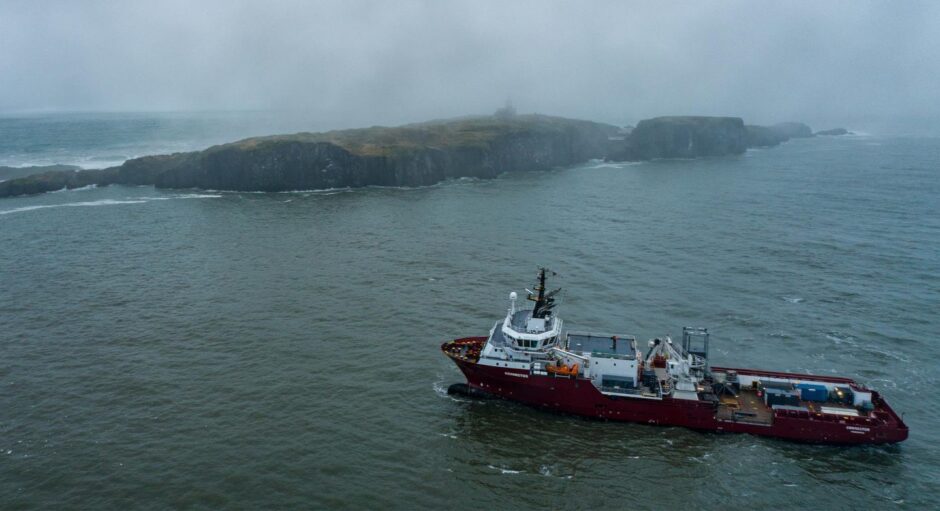
The first geotechnical seabed surveys for a proposed second phase to Scotland’s largest offshore wind farm have now been completed.
SSE Renewables said Monday that surveys had been carried out at the 1.1GW Seagreen site off the Angus coast, as it examines subsea conditions ahead of the proposed installation of 36 new turbines across the area.
Located adjacent next to the existing Seagreen project – Scotland’s largest and deepest offshore wind farm which was completed last autumn – Seagreen 1A represents an additional 500MW of generating capacity around 16 miles offshore.
While output from the initial project makes landfall at Tealing, a lack of further capacity led to National Grid offering the 1A phase a different connection point at the ScottishPower next to the former Cockenzie Power station in East Lothian.
The 90m Connector vessel was used to carry out site investigation works over the course of ten days last month. This involved specialist cone penetrometer testing (CPT) at almost 100 locations.
Thin rod sensors took samples of the seabed at depths of up to 15m to allow the developers to learn more about its composition and understand if turbine foundation locations are suitable and appropriate for the technology proposed.
As with the original project, proposals for Seagreen 1A include the use of three-legged suction caisson technology in the foundations. This allows the turbine foundation to fix securely to the seabed penetrating to a depth of up to 11 metres under the seabed, and saw the deepest foundation installed at a record depth of 58.6m below sea level.
Phase two of the geotechnical works is expected to commence later this year and should take around two weeks to complete. This phase will involve vibrocore (VC) works along the proposed export cable route from the offshore site to the landfall at Cockenzie.
Seagreen 1A project director Andrew Train said: “We are pleased to confirm the completion of another geotechnical offshore survey at the Seagreen 1A site. This builds on existing site data and is another step forward in the project following the unanimous support from East Lothian Council in the approval of the onshore substation design last year.
“The geotechnical works, using industry best practices, will enhance and broaden our understanding of the seabed conditions across the full project site. As always, we remain committed to continuing to build on community and supply chain links and relationships within the local and wider areas.
SSE (LON:SSE) operates the £3bn Seagreen project, having developed it in tandem with TotalEnergies (XPAR:TTE) which held a 51% stake – although the French energy major is in the process of offloading a 25.5% share to Thai national oil company PTTEP as part of a £552m deal struck in December.
Contracts for the next phase of construction have already been agreed, with Seaway 7 securing “preferred supplier status” to provide a full engineering, fabrication, transport and installation scope for 36 new foundations.
A final investment decision on the scheme is yet to be reached, though SSE last year decided not to bid for the project as part the AR5 Contracts for Difference auction because the price cap set by the government is too low.
Recommended for you
